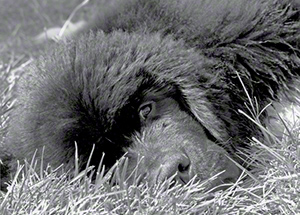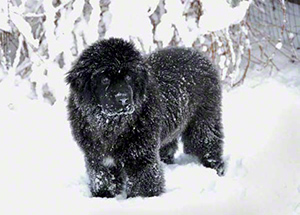Few things about puppy training are more misunderstood than the importance of crate training. Many people think that putting a puppy in a crate is cruel or harmful to that sweet little bundle of fur. Nothing could be farther from the truth.
There are several excellent reasons for getting your puppy accustomed to and happy in his crate.
1. Housebreaking: A puppy that is housetrained will be much happier because you are much happier. When your puppy learns that the only place he should relieve himself is outside, you will both have more freedom.
The logic for the use of a crate for housebreaking is simple: no dog likes to sleep where it has relieved itself. The first time the dog messes the crate he will fuss and bark and want to get out. Leave him there for just a few minutes and then let him out and take him outside—and praise him when he relieves himself. (You should, while he is young, praise him every time he goes outside—not just when he is let out of the crate.) Clean the crate carefully. When you again put the puppy in the crate he will not want to relieve himself in the crate. Instead, he will bark for you. Take him out, pick him up, and carry him outside. Then set him down and praise him when he goes. You may have to repeat the crate-cleaning step a couple more times, but very soon, your puppy will learn that he will want to go out to do his business.
Effective housebreaking depends on the idea that your puppy quickly comes to realize that there is only one place to relieve himself: outside. Every time he has an “accident” in the house, you have taken at least two steps back. Puppy now realizes that he can go inside. Therefore, in the early months, until you are confident that he is truly housebroken, there are only two options: 1) your dog is with you and you are watching him and when you recognize that he needs to go out, you immediately take him out; or 2) your dog is in his crate.
2. Comfort. Contrary to what some believe, puppies very quickly recognize their crates as places of safety and comfort. If you have ever watched a puppy squeeze into a corner or under a coffee table or in a spot between the bed and the wall, you are watching him looking for a safe, enclosed spot. You may be surprised at how soon your dog will seek out his crate when he wants to take a nap. When your puppy is not in his crate, leave the door open. He may often go in by himself. When my first Newf puppy was about six months old and had been housebroken for several months, I moved her crate (that she had lately been sleeping in every night without having its door closed) out to the car. That night when it was time for bed I couldn’t find her. I finally found her in our small bathroom in the shower stall. It was, I guess, the nearest thing she could find to her crate. She also loved the coolness of the tile, and she slept in that shower stall for the rest of her life.
3. Safety. You will also need a crate in your car. It is the doggy equivalent of a child’s seat for safety. Letting your dog ride free in the car is an accident waiting to happen the next time you have to slam your brakes on or have to swerve quickly. All those movies and TV shows with dogs riding in the open bed of a truck or in the car with their heads hanging out the windows may look cute—but you are really risking your dog’s health and safety if you allow that.
4. Other times and places. There are times when having your dog loose in the house is inconvenient or impossible. Aunt Penelope can’t stand slime. Your construction contractor won’t come in the house if the dog is loose. The living room carpet is being cleaned. And more… If you wait for those occasions to arise to crate your dog for the first time, both the dog and you are going to be upset. But if the crate has already been established as the dog’s own “room” and safe place, things will go smoothly. The sooner you have introduced your puppy to his crate, the happier you all will be.
But remember that there is one absolute rule about crating your dog: NEVER use the crate as punishment and never put the puppy there when you are angry or using a negative tone of voice. Instead, be encouraging, rewarding with a small treat and/or the puppy’s favorite toy or blanket. The crate must be a place of warmth and safety. If you associate the crate with anger or punishment, everything you have tried to accomplish will be lost.
Read More About Crate Training:
- Gearing Up for Puppy - Crates
- The Importance of Crate Training
- Crate Training for Safety and Comfort

